A new clinical study concludes that acupuncture and Chinese herbal medicine have potent effects in reversing infertility. Several types of patients suffering from infertility participated in the study including those using IVF, IUI and those using no biomedical assistance. All types showed significantly improved successful pregnancy rates. 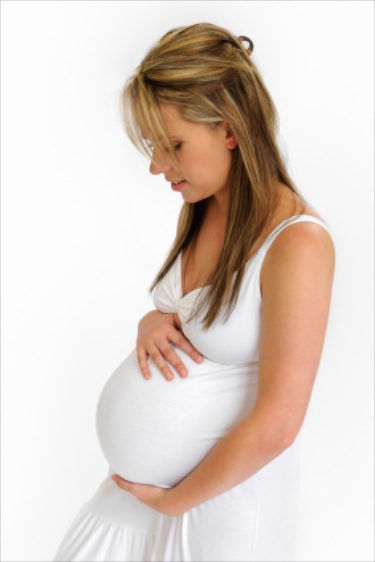
The researchers cited prior investigations measuring the biological mechanisms by which acupuncture enhances fertility. The researchers note that beta-endorphins and related neurotransmitters stimulated by acupuncture causes the secretion of gonadotropin-releasing hormone (GnRH). This exerts a regulatory effect on the menstrual cycle and ovulation. Acupuncture has been shown to enhance the micro-circulation of blood in the uterus through the inhibition of excess sympathetic nerve activity in the uterus. The researchers also note that their research is consistent with another investigation finding acupuncture successful in improving IVF outcomes.
The researchers note that the success rate of IVF is 24% (for 4 or more embryos transferred) as a standalone therapy. The combination of IVF with acupuncture has a significantly higher success rate of 42.5%. They note that the improved success rate is both indicates a safe and economical way to assist women undergoing fertility treatments. A total of 52.38% of women in the study conceived with acupuncture and/or herbal medicine without biomedical assistance. Another 9.52% conceived with acupuncture and/or herbs combined with IVF (in vitro fertilization) and 4.76% conceived with IUI (intrauterine insemination) combined with acupuncture.
Most women conceived within the first 12 months of the clinical trial. Measurements were made up to two years from the onset of acupuncture therapy. Several women did not complete the full 2 year course of the study. The study’s success rate may have been higher if all participants completed the full 2 year treatment regime. The women in the study consisted of 85.7% with primary infertility and 14.3% with secondary infertility. No adverse events were reported as a result of acupuncture and herbal medicine treatments.
Acupuncture was the primary treatment method in this current investigation. Chinese herbal medicine supplemented acupuncture in several cases. Based on a Traditional Chinese Medicine (TCM) differential diagnosis, herbal formulas Chai Hu Shu Gan San and Tao Hong Si Wu Tang were used. These formulas were added in cases wherein the TCM diagnostics indicated liver qi stagnation and blood stasis in the uterus respectively. We’ll take a look at the exact acupuncture points used in the study but first a quick look at the inclusion criteria.
Patients were admitted to the study if they met 5 inclusion criteria and did not meet 6 exclusion criteria. Patients had to be of child bearing age and between 21 and 45 years of age. Patients were required to be married with no conception after a least one year of unprotected sex during the fertile phase of the menstrual cycles. Patients had to be non-smokers and non-alcoholics. Patients needed to be willing to receive acupuncture and/or Chinese medicinal herbs and the husband had to have a healthy sexual activity ability and sperm analysis was required to be normal.
Patients with major heart, kidney, respiratory, liver function disorders and HIV were excluded. Women using illicit and investigational drugs were also excluded. If a patient used Traditional Chinese Medicine recently, they too were not able to participate in the study. Additionally, patients with any illness or issue that would impair compliance with the treatment schedule were excluded.
Acupuncture Treatment
Initially, acupuncture was administered 2-3 times per week following menstruation. During ovulation, acupuncture was administered on 3 consecutive days. This typically landed on days 12, 13 and 14. During the luteal phase, acupuncture was administered at a rate of approximately 2-3 times per week. The acupuncture needles were sterile, disposable needles of gauge 0.22 X 25mm and were inserted to a depth of 10-20mm. Deqi was stimulated at each point twice and the needle retention time was 25 minutes.
The acupuncture point selection was based on a TCM differential diagnosis. The primary point selection consisted of the following:
EX-CA1 (Zigong)
M-CA-23 (Sanjiaojiu, Qipang: bottom 2 points only)
SP6 (Sanyinjiao)
CV6 ( Qihai)
CV4 (Guanyuan)
CV3 (Zhongji)
Secondary points used in the study were:
CV12 (Zhongwan)
SP10 (Xuehai)
ST36 (Zusanli)
LR3 (Taichong)
The CV6, CV4, CV3 combination reflects a choice used classically by luminaries of the field. This combination powerfully nurtures the dantien, translated as the elixir field, sea of qi or energy center. Zigong is another point widely used in TCM for the treatment of infertility. Overall, the acupuncture point combinations reflect best practice choices within the TCM system.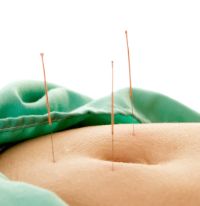
The researchers provided a general overview of the study’s relevance and focus. They note that approximately 15% of women in the child bearing years experience infertility. There are a broad range of issues leading to infertility. The causes range from dysfunction of the uterus, fallopian tubes and ovulation to hormonal imbalances. The researchers note that studies show that acupuncture regulates the hypothalamic-pituitary-ovarian axis and therefore menstruation. Additional research demonstrates that acupuncture regulates endocrine system functions and therefore addresses hormonal disorders. In TCM, the diagnoses of blood stasis and liver qi stagnation were common to many of the participants. Based on these principles, the focus of the treatments were to enhance circulation in the uterus and ovaries to improve fertility.
The researchers note that “acupuncture shows promising success in treating female infertility as compared with IVF (in vitro fertilization) alone without acupuncture….” They also note that acupuncture and herbal medicine show a “positive effect” on treating several types of female infertility. They note that acupuncture with or without herbal medicine supplementation shows promise in the treatment of female infertility.
Similar Acupuncture Points
A recent meta-analysis concurs with this new study on the effectiveness of acupuncture for the treatment of infertility and the effectiveness of the acupuncture point selection. The researchers determined common acupuncture points across multiple studies demonstrating effectiveness in promoting fertility. The comprehensive analysis of fertility treatments revealed that four key acupuncture points were significantly effective. Acupuncture points SP6 (Sanyinjiao), CV4 (Guanyuan), CV3 (Zhongji) and Zigong (Ex-CA1) demonstrated clinical efficacy.
Comparative Acupuncture Points
Another study of acupuncture points compared women receiving infertility treatments versus women receiving acupuncture for other concerns. A cross sectional study of 48 women consisted of two groups. Group 1 consisted of 24 women who were treated for infertility. Group 2 consisted of 24 women who were fertile and received acupuncture for other concerns. The acupuncture points common to both groups were K3, LV3 and SP6. The women receiving infertility treatments more often received the acupuncture points CV4, CV3 and ST29. For group 2, they received needling at SP3 more often than the women receiving treatment for infertility.
Pregnancy and Live Birth Rates
Researchers conclude that acupuncture improves both the pregnancy and live birth rates of women receiving in vitro fertilization and embryo transplantation (IVF-ET). During the investigation, researchers uncovered a biochemical mechanism by which acupuncture enhances fertility. In addition, the researchers compared successful IVF-ET rates with Chinese medicine differential diagnoses and made an interesting discovery.
The researchers found that electroacupuncture increases blood levels of HLA-G (human leukocyte antigen) “and the level of HLA-G secreted in embryos for the patients in the process of IVF-ET.” Presence of the HLA-G protein is predictive of higher pregnancy and live birth rates according to modern research conducted at the Department of Obstetrics and Gynecology, Sunnybrook and Women’s College Health Sciences Centre, Toronto, Ontario, Canada.
The researchers compared the Chinese medicine differential diagnostics for the women in the study. There were 82 kidney deficiency, 74 liver qi stagnation and 54 phlegm-dampness cases. The HLA-G levels were significantly higher during embryo transplantation as a result of electroacupuncture treatment for the kidney deficiency and liver qi stagnation groups. This corresponded to differences in the “high-quality embryo rate” with the kidney deficiency group having a 73 percent yield, the liver qi stagnation group having a 70 percent yield and the phlegm dampness group having a 54 percent high-quality yield. Of interest, all three groups had similar improvements in fertilization and pregnancy rates following the application of electroacupuncture. The researchers concluded that, due to electroacupuncture, “the pregnancy outcome and the pregnancy rate are improved.”
Anovulation Infertility
Additional research concludes that acupuncture is successful for the treatment of infertility. A clinical trial was conducted at the Department of Acupuncture and Moxibustion at Ruikang Hospital, an affiliate of Guangxi University of Chinese Medicine. A total of 40 cases were invested using a standard treatment protocol of electroacupuncture combined with moxibustion. The effective rate for the treatment regime was 85% based on the pregnancy rate documented in follow-up visits.
The researchers measured the effects of acupuncture and moxibustion on anovulatory infertility, a type of infertility caused by the lack of ovulation. Following the treatment regime, FSH, LH and E2 levels improved. In addition, the thickness of the endometrium increased and the follicle diameter increased. The higher pregnancy rates and objective testing resulted in the research team finding acupuncture and moxibustion successful in enhancing fertility for women with anovulatory infertility.
Electroacupuncture and moxibustion were applied to Zigong (EX-CA-1), CV4 (Guanyuan) and Zhongji (CV3). An additional choice of acupuncture points was made with the Ling Gui Ba Fa method. Ling Gui Ba Fa, translated as the eightfold method of the sacred tortoise, is a method for choosing effective acupuncture points selected from the eight confluent points of the eight extraordinary vessels based on the time of day. This method is based on the theory of the nine palaces and eight trigrams to determine acupuncture points that are most effective for a given period of time.
The earliest account of the Ling Gui Ba Fa method is found in the Zhen Jiu Zhi Nan, A Guide to Acupuncture and Moxibustion, written by Dou Hang-qing in the Jin dynasty. The eight confluent points, which are the palette of point selection, are SP4, PC6, SI3, UB62, GB41, TB5, LU7 and KI6. More conventional methods employ the standard use of differential acupuncture channel diagnoses and indications to select from these acupuncture points.
PCOS
In other research, investigators concluded that acupuncture was able to improve “menstrual frequency and decrease circulating androgens in women with polycystic ovary syndrome (PCOS).” Infertility is an unwanted complication associated with some forms of PCOS, polycystic ovarian syndrome, and acupuncture showed significant clinical improvements in the women studied.
Another study published in the American Journal of Physiology – Endocrinology and Metabolism concludes that low frequency electroacupuncture improved menstrual frequency and balanced sex steroid levels in women with PCOS. The study measured improvements in a wide range of endocrine variables such that the researchers concluded that electroacupuncture may help induce ovulation in women attempting to conceive since participants showed significant improvements in monthly menstrual frequency. There are similarities in the acupuncture point selection in this study with the study of women with anovulatory infertility.
Acupuncture was applied to CV3, CV6, ST29, SP6, SP9, LI4 and PC6. All needles were stimulated manually until deqi arrived. Thirty minutes of 2Hz electroacupuncture was applied to CV6, CV6, ST29, SP6 and SP9 for each treatment. LI4 and PC6 were manually stimulated every 10 minutes to evoke sensation. Needle length ranged from 30 to 50mm and the diameter was 0.32mm. Needle depth ranged from 15 to 35mm. Acupuncture was administered twice per week for two weeks, one time per week for six weeks and once every other week for eight weeks for a total of 14 acupuncture treatments over a 16 week period.
ART
Additional research demonstrates a consensus among acupuncture experts on best practice treatment protocols for acupuncture enhancement of assisted reproductive technology (ART) fertility treatments. ART includes all fertility treatments in which both the eggs and sperm are handled. ART includes in vitro fertilization (IVF) and intrauterine insemination (IUI). In this study, researchers set out to determine if a consensus exists on high priority acupuncture points for the enhancement of ART.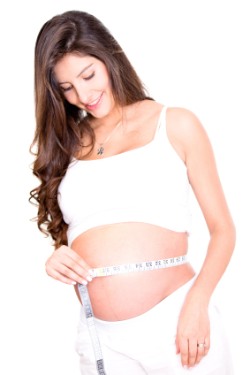
ART has been used in the USA since 1981. Although acupuncture and Chinese medicine for the treatment of infertility is a time honored practice, the combination of acupuncture with ART has emerged in recent years as an effective approach for improving pregnancy and live birth rates. In this study, researchers administered 3 rounds of questionnaires to 15 international acupuncture fertility experts to determine if a consensus exists on best practice protocols.
The investigation revealed that several key components are central to acupuncture in combination with ART. The timing of an acupuncture treatment in relation to the menstrual cycle is of great importance. An acupuncture treatment administered between day 6 and 8 of the “stimulated ART cycle” is optimal. In addition, it is ideal to have two acupuncture treatments “on the day of embryo transfer.” Pre-transfer acupuncture points of high priority are SP8, SP10, LV3, ST29 and CV4. Post-transfer points include GV20, KI3, SP6, PC6 and KI3. Auricular acupuncture points Shenmen and Zigong were also determined to be of high priority.
Pharmaceuticals and Acupuncture
New research demonstrates higher ovulation and pregnancy rates for women receiving acupuncture combined with clomiphene (clomifert, clomid) compared with women receiving clomiphene only. Clomiphene is a selective estrogen receptor modulator. It inhibits hypothalamus feedback to stimulate production of gonadotropins, hormones that affect fertility including FSH (follicle stimulating hormone) and LH (luteinizing hormone).
The study measured a control group of 19 women and an acupuncture group of 17 women. The control group received 50mg of oral clomiphene at a rate of once per day for a total of 50 menstrual cycles. The acupuncture group received the clomiphene at the same dosage and rate plus regular acupuncture treatments. The researchers measured changes in ovulation, endometrial thickness, cervical mucus, pelvic fluid, and follicular development. The acupuncture group showed a significantly higher rate of both ovulation and conception than the group receiving medication only.
In another recent study of 5,807 women, it was demonstrated that acupuncture improves clinical pregnancy rates and live birth rates for women receiving IVF (in vitro fertilization). A study published in the American Journal of Reproductive Immunology shows that the application of acupuncture to acupoints ST36 and SP6 was shown to prevent egg implantation failure and another study of 309 women concluded that electroacupuncture “significantly improved the clinical outcome of ET (embryo transfer).”
A recent study measured the biochemical mechanisms by which acupuncture increases IVF success rates. In a randomized controlled study, it was concluded that, “Acupuncture could improve the poor receptive state of (the) endometrium due to mifepristone by promoting Th2 cytokines secretion and inhibiting Th1 cytokines to improve blastocyst implantation.”
Sperm Motility and Acupuncture
Male infertility is also of major concern. Researchers conclude that acupuncture restores sperm motility. Laboratory experiments measured the effects of electroacupuncture on infertility by stimulating acupoints located on the scalp, abdomen and legs.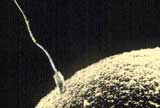 The researchers measured “a trend of improved motility and increased number of motile epididymal spermatozoa in the H+EA (electroacupuncture) group.” The researchers note that electroacupuncture enhances “cell proliferation through improvement of Sertoli cell functions.” Sertoli cells are activated by follicle-stimulating hormone and are located in the convoluted seminiferous tubules, the anatomical structure in the testes where spermatozoa are produced.
The researchers measured “a trend of improved motility and increased number of motile epididymal spermatozoa in the H+EA (electroacupuncture) group.” The researchers note that electroacupuncture enhances “cell proliferation through improvement of Sertoli cell functions.” Sertoli cells are activated by follicle-stimulating hormone and are located in the convoluted seminiferous tubules, the anatomical structure in the testes where spermatozoa are produced.
Researchers disrupted spermatogenesis using a scrotal heat-treated rat model. Electroacupuncture was applied to GV20 (Baihui), CV4 (Guanyuan), ST36 (Zusanli) and SP6 (Sanyinjiao) for a total of ten acupuncture sessions. After 79 days following the heat treatment, motile spermatozoa were found in the heat-treated group that received electroacupuncture. No motile spermatozoa were found in the rats that did not receive electroacupuncture. The electroacupuncture group also showed a significant increase in PCNA-positive cells and inhibin B levels. In addition, the electroacupuncture group demonstrated a higher Johnsen’s score through day 56. As a result of these findings, the researchers conclude that electroacupuncture “may facilitate the recovery of spermatogenesis and may restore normal semen parameters in subfertile patients.”
Comfort In The Clinical Setting
Another team of researchers took a less utilitarian approach. Their research concludes that acupuncture reduces anxiety in women undergoing IVF (in vitro fertilization). A randomized-controlled study of 43 women undergoing IVF measured changes in anxiety levels.
A total of four acupuncture treatments over a period of four weeks at a rate of once per week were administered. The acupuncture group received acupuncture at acupoints Yintang, HT7 (Shenmen), PC6 (Neiguan), CV17 (Shanzhong) and DU20 (Baihui). The control group received needle stimulation at non-acupuncture points near the areas of the true acupuncture points (sham acupuncture).
The true acupuncture group showed a significant reduction in anxiety while the sham acupuncture group did not. The researchers concluded that acupuncture reduces anxiety and psychological strain for women undergoing IVF. This research focuses on the integration of acupuncture with modern medical practices and represents a trend in modern investigations.
HealthCMi
At the Healthcare Medicine Institute (HealthCMi), we follow this type of research very closely. Positive clinical outcomes for the treatment of female infertility is a consistent trend in modern reserach. Take a look at this video of recent Acupuncture CEU/PDA course on the treatment of pelvic inflammatory disorder, a major cause of infertility. This course is ABORM (American Board of Oriental Reproductive Medicine) approved.
A prominent acupuncturist specializing in the treatment of infertility is Dr. Ting Ting Zhang. Members of the Healthcare Medicine Institute attended a conference at the American College of Traditional Chinese Medicine (ACTCM) in San Francisco, California where she covered some of her latest advances in the field. Dr. Zhang is the Gynecology Department Chair of Yue Yang Hospital at the Shanghai University of TCM.
Dr. Zhang presented new ultrasound and hormone testing research revealing that certain Chinese herbal medicines promote ovulation and egg development, increase sperm motility and count and prevent miscarriage. Further, biomedical data confirms that Chinese herbal medicine greatly increases the conception rate of women undergoing artificial insemination.
Dr. Zhang opened up the conference with some basic statistics. A recent study of 500 child bearing age women who were NOT treated with Chinese herbal medicines resulted in a 60-70% conception rate given regular sexual intercourse. At 6 months, the rate increases to 75-80%. At 1 year, the rate increases to 80-90%.
From age 30 to 34, 1 in 7 women experience infertility. Between the ages of 35 and 40, 1 in 5 women are infertile and between the ages of 40 and 44, 1 in 4 women experience difficulties with infertility. In up to 55% of cases, infertility is caused by a female reproductive disharmony. In 25-40% of cases, infertility is caused solely by a male reproductive issue. In 20% of all cases, infertility is caused by both the male and female partners.
Dr. Zhang’s clinical outcomes demonstrated a very high rate of clinical success in reversing infertility. Dr. Zhang noted that “infertility is a symptom, not a disease.” She posits her great success to the teachings of the great Dr. Tai.
Dr. Zhang presented Chinese medicine differential diagnostics in relation western medical findings. Basal body temperature (BBT) charts were revealed to express a process of emerging yin essence in the first 12 days of a menstrual cycle followed by a powerful yang stage. A direct reading of the BBT chart translates into an exact Chinese medicine diagnosis. In addition, Dr. Zhang introduced methods for analyzing hormone tests. For example, high FSH is linked to yin deficiency and high LH is linked to yang deficiency.
A multitude of ways to view BBT, ultrasound, sexual hormone tests and other western related data were correlated into the Chinese medicine theoretical framework. Dr. Zhang closed the divide between biomedical medical data and Chinese medicine differential diagnostics in her presentation. Acupuncturists can now read the biomedical data, make a Chinese medicine differential diagnosis and choose from the correct herbal medicines to promote conception and a healthy pregnancy.
Common conditions leading to infertility are kidney yin and yang deficiency, liver qi stagnation and blood stasis. For women, the main concern is to harmonize the menstrual cycle. Dr. Zhang presented important herbal formulas to address many clinical scenarios and included special herbs to promote ovulation and nourish the fetus.
Dr. Zhang presented herbal remedies to prevent anti-sperm antibodies such as AsAb and other autoimmune system disorders from leading to infertility. Dr. Zhang covered the topic of uterine fibroids, their exact relationship to infertility and how to overcome any impediments they may present. This requires, at the very minimum, an ultrasound test of existing fibroids to determine their exact placement and size. Surgical removal of fibroids may be required in some cases.
Dr. Zhang presented step-by-step methods to take an abnormal BBT charted cycle to one that follows a healthy pattern from follicular phase through ovulation to luteal phase and menstruation. The herbal medicines restore the normal ovulation window, optimize the fertility cycle and enhance the process of a healthy pregnancy and fetus. Dr. Zhang detailed the exact herbs needed to promote egg maturation and those needed to facilitate uptake and transport of eggs into and through the fallopian tubes. Further, she presented a detailed herbal medicine regime to optimize the window of opportunity for patients undergoing IVF and IUI. In cases where artificial insemination has previously failed, adding Chinese herbs balances the health of the patient such that artificial insemination becomes successful.
Adam White, L.Ac. is the CEO of the Healthcare Medicine Institute. He notes that “Dr. Ting Ting Zhang has managed to fully integrate the biomedical model for the treatment of primary and secondary infertility into the Chinese medicine system. We now have a fully integrated understanding of biomedical medical test data in terms of Chinese medicine theory and we have a new understanding of herbs that promote the various stages of conception. Dr. Zhang and her colleagues at Shanghai University of TCM have employed biomedical testing methods to measure the effects of herbal medicines on processes such as ovum development and release, fallopian tube function, and fetal development. Thanks to Dr. Zhang, the clinical efficacy of Chinese medicine in the treatment of infertility has advanced tremendously.”
References:
Chui, Shiu Hon, Fung Chun Chow, Yim Tong Szeto, Kelvin Chan, and ChristopherWK Lam. “A Case Series on Acupuncture Treatment for Female Infertility with some cases supplemented with Chinese Medicines.” European Journal of Integrative Medicine (2014).
Fan Qu, Jue Zhou, Mark Bovcey, Giovanna Franconi, Kelvin Chan, Caroline Smith et al. Does acupuncture improve the outcome of in vitro fertilization? Guidance for future trials. European Journal of Integrative Medicine 2012; 4(3): e234 – e244.
Eric Manheimer, Grant Zhang, Laurence Udoff, Aviad Haramati, Patricia Langenberg, Brian M Berman et al. Effects of acupuncture on rates of pregnancy and live birth among women undergoing in vitro fertilisation: systematic review and meta- analysis. British Medical Journal 2008;336;545-549.
Exploration of clinical regularities in acupuncture-moxibustion treatment for infertility. Qin-feng Huang. JOURNAL OF ACUPUNCTURE AND TUINA SCIENCE, Volume 10, Number 2. (2012), 72-76, DOI: 10.1007/s11726-012-0574-0.
Acupunct Med 2012;30:12-16 doi:10.1136/acupmed-2011-010089. Traditional Chinese medicine patterns and recommended acupuncture points in infertile and fertile women. Oddveig Birkeflet, Petter Laake2, Nina Vollestad.
XU, Yin, and Miao ZHANG. “Efficacy observation on 40 cases of anovulatory infertility treated by acupuncture and moxibustion.” World Journal of Acupuncture-Moxibustion 23, no. 1 (2013): 40-43.
Electrical and manual acupuncture stimulation affects estrous cyclicity and neuroendocrine function in a DHT-induced rat polycystic ovary syndrome model. Yi Feng1,2, Julia Johansson1, Ruijin Shao1, Louise Mannerås Holm1, Håkan Billig1, Elisabet Stener-Victorin1,3 . Experimental Physiology. DOI: 10.1113/expphysiol.2011.063131.
Elizabeth Jedel, Fernand Labrie, Anders Odén, Göran Holm, Lars Nilsson, Per Olof Janson, Anna-Karin Lind, Claes Ohlsson, and Elisabet Stener-Victorin. Impact of electro-acupuncture and physical exercise on hyperandrogenismand oligo/amenorrhea in women with polycystic ovary syndrome: a randomized controlled trial. Am J Physiol Endocrinol Metab 300: E37–E45, 2011.
BMC Complementary and Alternative Medicine 2012, 12:88 doi 10.1186/1472-6882-12-88. 7 July 2012. Development of an acupuncture treatment protocol by consensus for women undergoing Assisted Reproductive Technology (ART) treatment. Caroline A Smith, Suzanne Grant, Jane Lyttleton and Suzanne Cochrane.
Zhongguo Zhen Jiu. 2012 Feb;32(2):113-6. Effects of electroacupuncture on embryo implanted potential for patients with infertility of different symptom complex]. Kong FY, Zhang QY, Guan Q, Jian FQ, Sun W, Wang Y. Department of Reproduction, The Second Affiliated Hospital of Shandong University of TCM, Jinan, China.
Fertil Steril. 2005 Jan;83(1):30-6. Secretion of human leukocyte antigen-G by human embryos is associated with a higher in vitro fertilization pregnancy rate. Yie SM, Balakier H, Motamedi G, Librach CL.
JOURNAL OF ACUPUNCTURE AND TUINA SCIENCE. Volume 10, Number 2 (2012), 77-80, DOI: 10.1007/s11726-012-0575-z. Therapeutic effect observation on combined acupuncture and medication for ovulation. Xue-su Yu, Xing-qiang Yan and Yu-yu Shen.
Effects of acupuncture on pregnancy rates in women undergoing in vitro fertilization: a systematic review and meta-analysis. Cui Hong Zheng, M.D.; Ph.D.a, Guang Ying Huang, M.D., Ph.D.a; Ming Min Zhang, M.D., Ph.D.b; Wei Wang, M.D., Ph.D.c.. Fertility and Sterility. 1-11-2012.
Gui, Juan; Xiong, Fan; Li, Jing; Huang, Guangying. Effects of Acupuncture on LIF and IL-12 in Rats of Implantation Failure. American Journal of Reproductive Immunology. Am J Reprod Immunol. 1600-0897. 2012.
Fertility and Sterility. Volume 96, Issue 4, October 2011, Pages 912-916. Increase of success rate for women undergoing embryo transfer by transcutaneous electrical acupoint stimulation: a prospective randomized placebo-controlled study. Rong Zhang Ph.D., Xiao-Jun Feng B.S., Qun Guan B.S., Wei Cui M.S., Ying Zheng M.S., Wei Sun B.S., Ji-Sheng Han M.D.
T. G. Wegmann, H. Lin, L. Guilbert, and T. R. Mosmann, “Bidirectional cytokine interactions in the maternal-fetal relationship: is successful pregnancy a TH2 phenomenon?” Immunology Today, vol. 14, no. 7, pp. 353–356, 1993.
Juan Gui, Fan Xiong, Jing Li, and Guangying Huang, “Effects of Acupuncture on Th1, Th2 Cytokines in Rats of Implantation Failure,” Evidence-Based Complementary and Alternative Medicine, vol. 2012, Article ID 893023, 10 pages, 2012. doi:10.1155/2012/893023.
Electroacupuncture enhances spermatogenesis in rats after scrotal heat treatment. Volume 2, Issue 1. 3-2012. Pages 53 – 62. Jing Gao, Yan Zuo, Kam-Hei So, William S.B. Yeung, Ernest H.Y. Ng and Kai-Fai Lee.
Effect of acupuncture on symptoms of anxiety in women undergoing in vitro fertilisation: a prospective randomised controlled study. Daniela Isoyama, Emerson Barchi Cordts, Angela Mara Bentes de Souza van Niewegen, Waldemar de Almeida Pereira de Carvalho, Simone Tiemi Matsumura, Caio Parente Barbosa. Acupunct Med acupmed-2011-010064. Published Online First: 12 April 2012 doi:10.1136/acupmed-2011-010064.

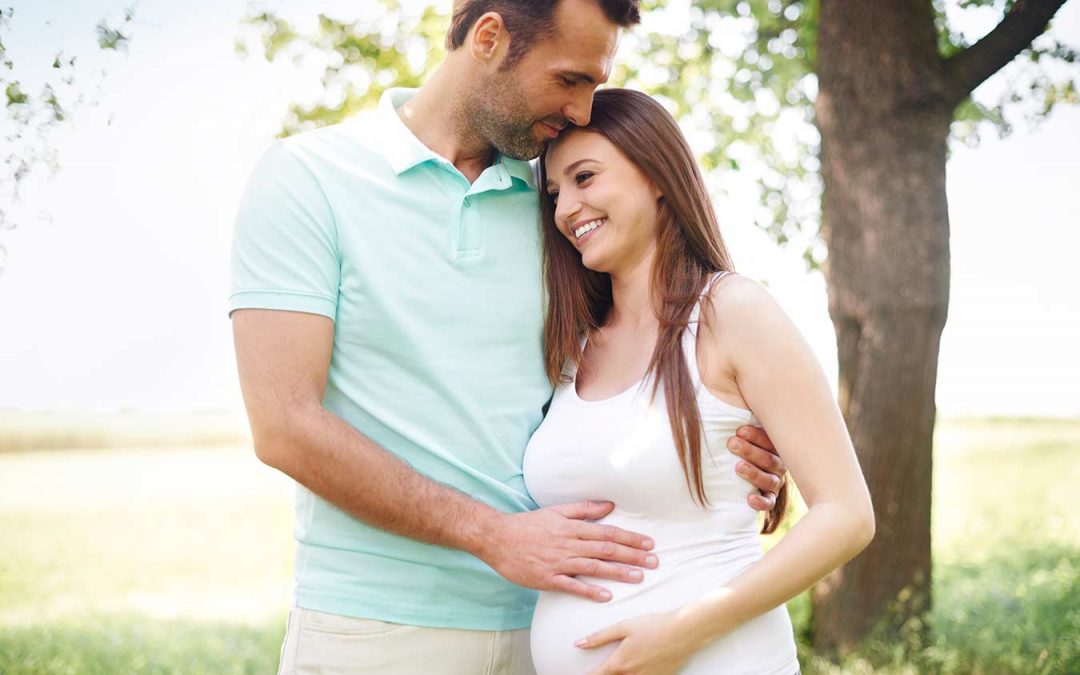
Recent Comments